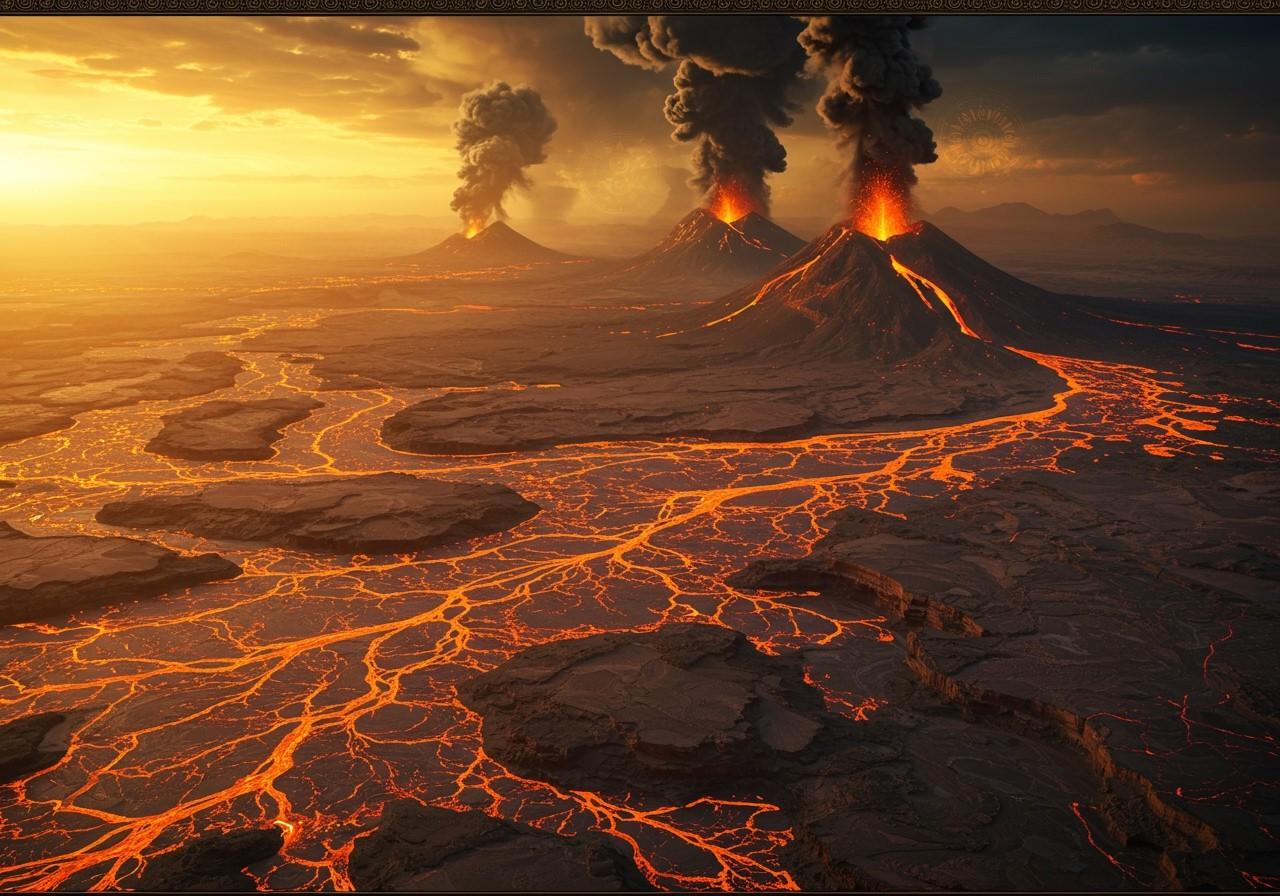
The Deccan Traps and Deccan Plateau are significant geological features in India, renowned for their volcanic origins and profound influence on the region’s landscape and history. This article delves into the formation of the Deccan Traps, their impact, and their relationship with the Deccan Plateau.
Geological Formation of the Deccan Plateau
Situated in central India, the Deccan Plateau is characterized by its flat terrain and basalt rock formations. Its creation involved tectonic movements and volcanic activity. As the Indian Plate drifted northward, its collision with the Eurasian Plate triggered volcanic eruptions that formed the plateau.
- Time Period: Approximately 66 million years ago.
- Elevation Impact: The plateau’s elevation influences the region’s climate and agricultural practices, creating unique ecosystems and impacting crop yields.
- Mineral Resources: The Deccan Plateau is rich in iron and manganese ores, contributing significantly to India’s mineral wealth and industrial development.
- Biodiversity: The plateau’s unique geological features have fostered a diverse range of flora and fauna, making it a biodiversity hotspot.
The Deccan Traps: Definition and Significance
The Deccan Traps are layered volcanic rock formations resembling steps, located within the Deccan Plateau. The term “trap,” derived from a Swedish word meaning “stairs,” aptly describes the terraced landscape.
- Origin: The Deccan Traps resulted from massive volcanic eruptions, shaping the region’s geology and topography.
- Extent: Covering approximately 500,000 square kilometers, these formations demonstrate the scale of the ancient volcanic activity.
- Thickness: Lava flows in the Deccan Traps can reach up to 2 kilometers in thickness, indicating the intensity and duration of the eruptions.
- Geological Importance: Studying the Deccan Traps provides valuable insights into volcanic activity and its effects on the Earth’s crust.
- Economic Use: The basalt rock from the Deccan Traps is utilized in construction, road building, and agriculture, supporting local economies.
Volcanic Eruptions and Their Impact
The Deccan Traps were formed by one of the largest volcanic events in Earth’s history. These eruptions spanned millions of years, releasing enormous volumes of lava and gases.
- Environmental Impact: The eruptions caused substantial changes in climate and atmospheric composition, affecting global ecosystems.
- Extinction Event: The Deccan Traps eruptions are believed to have played a role in the Cretaceous-Paleogene (K-Pg) extinction event, which led to the demise of the dinosaurs.
- Evidence: Evidence supporting this link includes iridium layers and shocked quartz, indicating a major catastrophic event.
- Volcanic Winter: The release of volcanic gases could have triggered a “volcanic winter,” impacting global temperatures and ecosystems.
Basalt Rock and Its Characteristics
Basalt, formed from solidified lava, is a primary component of the Deccan Plateau.
- Physical Properties: Basalt is a dense, hard, dark-colored rock, making it suitable for various applications.
- Uses: It is commonly used in construction, road building, and as decorative stone, demonstrating its versatility.
- Columnar Basalt: The unique columnar basalt formations, created by cooling lava, are a striking geological feature.
- Agricultural Impact: Basalt contributes to soil formation and water retention, benefiting agriculture in the region.
- Historical Significance: Basalt was used in ancient Indian architecture, showcasing its historical and cultural importance.
The Deccan Traps Extinction Event
The Deccan Traps are believed to have contributed significantly to the mass extinction event 66 million years ago, coinciding with the Cretaceous-Paleogene (K-Pg) extinction event. The main phase of eruptions began approximately 250,000 years before the extinction and persisted for 750,000 years.
These eruptions, occurring in the Western Ghats, caused significant environmental changes, including hyperthermal warming, mercury toxicity, ocean acidification, and acid rain. The resulting lava flows, reaching up to 2 kilometers thick and covering roughly 500,000 square kilometers, released vast quantities of volcanic gases like sulfur dioxide, potentially causing a volcanic winter.
Evidence linking the Deccan Traps eruptions to the extinction event includes iridium layers and shocked quartz. While other theories exist, such as a massive asteroid impact, some scientists suggest a combination of factors led to the extinction.
The extinction event drastically affected marine and terrestrial life, leading to the demise of dinosaurs and allowing mammals to diversify. The Deccan Plateau’s unique geology continues to influence India’s biodiversity. Research is ongoing to fully understand the Deccan Traps’ role in this historical event.
How Poojn.in Supports Your Connection to the Sacred Deccan Region
The Deccan region holds profound spiritual significance. At Poojn.in, we help you connect with this sacred land through authentic puja items. While the Deccan Traps were formed millions of years ago, these basalt formations now underpin numerous temples and spiritual sites.
For those interested in performing Bhumi Puja (earth element pujas) or ceremonies at Deccan temples, Poojn.in offers:
- Pure copper and brass vessels traditionally used in Maharashtra and Deccan region temples.
- Natural cotton wicks (battis) made from local Deccan cotton.
- Authentic kumkum and natural colors sourced from the mineral-rich Deccan soil.
- Traditional puja thalis crafted by artisans from the Deccan plateau.
- Pure ghee and oil lamps suited for temple offerings.
Our curated collection provides regionally appropriate and authentic items for your spiritual practices. All products are verified for purity, delivered across India. Visit www.poojn.in for our full range.
Conclusion
The Deccan Traps offer a glimpse into Earth’s past. Their potential role in the K-Pg extinction event underscores the impact of volcanic activity. While the debate continues about the primary cause of the extinction, the evidence suggests a complex interplay of factors. These lava flows shaped the Deccan Plateau and influenced life’s evolution. As research continues, the Deccan Traps provide invaluable insights into the forces shaping our world.
Veerabhadra Temples of India: A Journey Through Architectural Marvels
Parshuram Temples Goa and Kerala: A Journey Beyond the Shores


